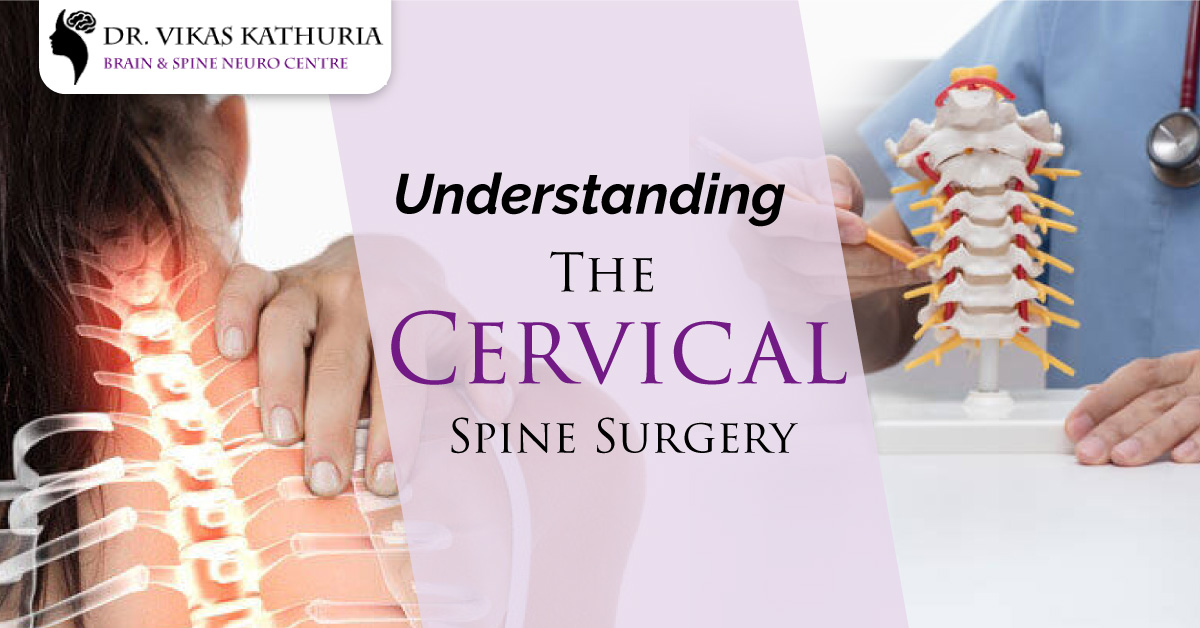Understanding the Cervical Spine Surgery

For each patient, the reasons for having cervical spine surgery are unique. If your doctor recommends this operation, you may be concerned about how long it will take to recuperate. Consider many things if your doctor has advised you to get this treatment. Continue reading to find out more.
The Basics of Cervical Spine Surgery
First, the best doctors usually don’t recommend cervical spine surgery to their patients. You may have to prepare for this type of surgery for the following reasons: if other treatments have failed.¬†
The disease of the Disc in the Neck
In many cases, cervical disc disease is brought on by the typical deterioration of the discs in your neck, which are responsible for the pain-free movement of your neck.
A herniated or ruptured disc can cause various symptoms, including tingling, numbness, tingling sensations, stiffness, and tingling in the arm, shoulder, and hand.
Spondylolisthesis
Spinal stenosis is a narrowing of the spinal canal that most commonly affects the elderly.
A herniated disc can also cause stenosis in the neck, which may necessitate surgery.
Symptoms of spinal stenosis include tingling, numbness, weakness in the hands and legs, and problems with the bowel or bladder nerves. In some cases, patients of Gurgaon may have difficulty walking or maintaining their equilibrium.
Osteoarthritis of the cervical spine
It’s not uncommon for Cervical Osteoarthritis to create spurs or additional cartilage on a patient’s spine.
Neck stiffness and discomfort, as well as headaches and shoulder pain, are the most common symptoms. These are just a few spinal conditions that may necessitate cervical spine surgery.
Your doctor may use pain mapping if the reason for your symptoms is not apparent. MRIs and X-rays are used to identify anomalies and eradicate the problem.
It’s easier for Doctor Vikas Kathuria to pinpoint the origin of your symptoms when they employ pain mapping.
Detection and Therapy
Your surgical choices may include minimally invasive procedures that can provide significant pain relief. Several spine disorders can be treated with cervical fusion surgery, which requires less recovery time and carries fewer risks than standard procedures.
Several times, however, sophisticated or revision surgery is required. Having a second procedure doesn’t necessarily mean that the first one went wrong. The spine is one of the most intricate parts of the human body. Even after a successful operation, the spine might deteriorate and necessitate more procedures.
Recovering from cervical spine surgery is critical, regardless of whether you’re having it done for the first time or having it done again.
Progressing in the right direction
How long you will be in the hospital following cervical spine surgery depends on how extensive your procedure was. An overnight hospital stay isn’t always necessary, and outpatient surgery is an option in many cases. One to several hours may be required for the surgery itself. As an example, a fusion procedure takes longer than a disc procedure. Physical therapy will be necessary to regain the strength in your muscles and tissues that you lost following your treatment.
The following is what you should expect if you are needed to stay in the hospital for one or two nights after your surgery:
Post-Op
A nurse will monitor your legs and feet following most procedures. As an additional option to make breathing easier and reduce the risk of lung infections, you may be fitted with an Incentive Spirometer (a breathing tube). Your early post-operative regimen will not likely include a restricted diet unless you have additional health concerns that need such a step.
Clear liquids are permitted as soon as you can tolerate solid foods after most cervical spine surgeries.
Surgical Incisions and Medications are Required
For the length of your hospital stay, your incision site will likely be wrapped, the dressings changed, and you may need intravenous fluids to avoid dehydration. Antibiotics may be given intravenously for a few hours following the procedure to prevent infection. A variety of pain medications, including those given intravenously, are readily available. Keep your nurse informed of any discomfort you are having so they can make sure that you are ready to begin physical therapy in the following days.
After surgery, an ice pack is frequently used to reduce swelling and irritation.
Therapy for the Muscles and Joints
It is possible to sit on the side of your bed and stand with the help of a physical therapist.
Doing so within the first 24 hours of surgery is generally recommended. Don’t try to start moving too rapidly, or you’ll overexert yourself.
In most cases, you will need to wear a cervical brace for some time after surgery. Wearing a brace for an extended period is primarily determined by the type of surgery.
These are some of the most popular types of braces:
- Philadelphia collars 
- Halos
- Collars that are both soft and hard 
- Sterno-occipital mandibular immobilisation devices (SOMIs).
There are only a few doctors qualified to do cervical spine surgery. A neurosurgeon specializing in spinal issues is the best person to consult before surgery. Many people who undergo cervical spine surgery recover fully and well when treated by the proper doctor and using the best approach. It would help if you had a comprehensive examination and consultation with an expert to get a definitive answer.
